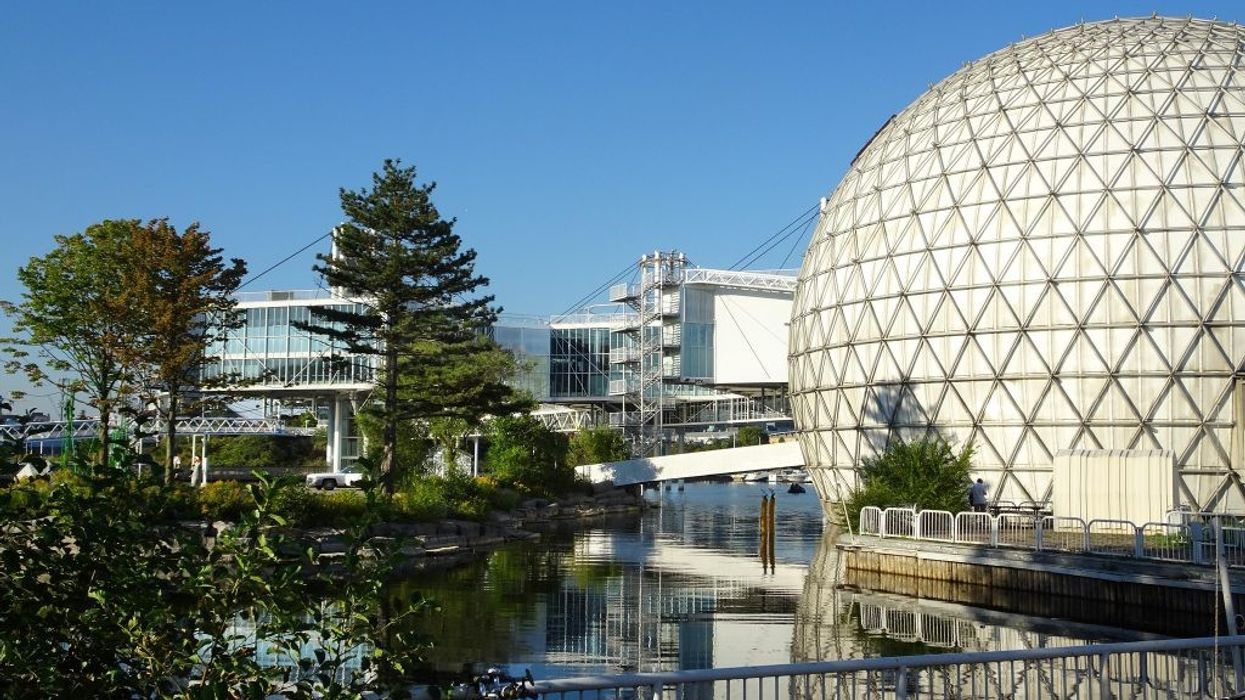Anyone who has seen “It’s A Wonderful Life,” remembers the scene where its suicidal hero, George Bailey (Jimmy Stewart) runs through his hometown, Bedford Falls, only to find it transformed into Pottersville. George’s guardian angel, Clarence, has granted him his wish that he was never born. Without Bailey, Bedford has become a cheap and tawdry burg that caters to our worst impulses. It is a den of iniquity, complete with gambling casinos, bars, strip clubs and the like. Its residents are mean, nasty and scared.
Today, we watch the scene and can’t help but think of Toronto. Though there are no heroes in the local version, there is a clear villain. It's not Mr. Potter, the grasping, money-obsessed banker who already owns most of Bedford Falls but wants it all. In 21st-century Toronto, that role goes to Ontario Premier Doug Ford. Like the cartoonish Potter, Ford knows how to hold a grudge, and where Potter is greedy for money, Ford is greedy for power. But what they share above all is a view of humanity so bleak it’s almost funny.
READ: Provincial Government Seeking Proposals For New Ontario Place
Then there’s Ford’s unfailing sense of tackiness. The first hint was the Buck a Beer program launched last summer. Though it has long since fizzled out, Ford’s scheme was to coerce breweries into marketing cheap suds for which he could then take credit. The premier’s assumption — that beer is foremost in the minds of most Ontarians – probably said more about him than us, guzzlers that we are.
But it was a clear – if unflattering — sign of what Ford thinks it takes to win voters’ hearts. More recently, Ford showed his hand in his handling of Ontario Place. The 1971 people’s pleasure palace eventually fell out of fashion and attendance dropped. The province finally closed it in 2012. Though it came from a different era, Ford’s call for proposals makes it clear that the facility is – as the Premier might have put it – “open for business.” That means anything goes. The recently refurbished Cinesphere is on the chopping block as are “pods” that give Ontario Place its futuristic feel. What this means is that proposals need not take the complex and its architecture into account; all that can be torn down leaving the whole 155-acre site up for grabs.
Ford’s approach is so inappropriate even former Progressive Conservative Premier Bill Davis has spoken out against it. His concern is that Ontario Place remains in the public realm, not handed over to private interests.
READ: How Long Will It Take Before Doug Ford Goes After Toronto’s Waterfront?
As the province’s guidelines make clear: “The areas available for development includes the Ontario Place islands, mainland, pods and the Cinesphere.” That pretty well encompasses everything worth worrying about and worth saving. In return, the province wants “a spectacular world-class, year-round destination to visit in North America.”
According to Ontario tourism minister Michael Tibillo: “Our vision for Ontario Place will make it an impressive attraction that could include exciting sport and entertainment landmarks, public parks or shopping. We could also have places for recreation, for people to come together and to hear great music at the existing amphitheatre.” It might mean, “potential landmarks such as sports and entertainment attractions, and retail.”
Given the sort of thing Ford proposed for the Port Lands when he was a Toronto councillor, Tibillo’s vapid words could take many forms, everything from a Ferris wheel to a monorail to a mega-mall. Others suggest the Ford Conservatives will hold out for a gambling casino, which both Doug Ford and his late brother Rob, then mayor, supported back in 2012.
How low can our expectations go? Some would say we’ve reached rock bottom. Others argue it’s a matter personal preference. At the same time, Ford’s track record as a city councillor show him to have been on the wrong side of mainstream opinion every time. His failure to understand the nature of urban culture has been consistent throughout his political career. Though in its heyday Ontario Place attracted people from well beyond Toronto, it is a part of a city, a city that’s starting to feel pressure about its ever-diminishing supply of public space.
READ: Without A Clear Leader, What Does The Future Hold For Toronto?
The truth is that Ontario Place was not as critical a part of Toronto when it opened in 1971 as it could be in the future when the public realm will come with an even higher price. Consider the fact that city council is having serious discussions about Rail Deck Park, a proposed 21-acre facility that would cost more than $1.1 billion. If that’s not a sign of a city concerned about open space, green space, parkland – whatever you want to call it -- then what is?
Toronto doesn’t need another mall, condo, arena, stadium, concert hall as much as it needs a 21st-century green space. That means a full accessible, all-season venue where users can run, walk, sit, stare, read, talk, ski, picnic, play games, walk their dogs, eat and so on, a place to go an enjoy the view – and celebrate urban life, something that's never been more difficult or more necessary.





















